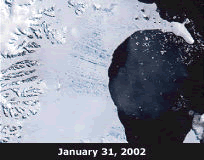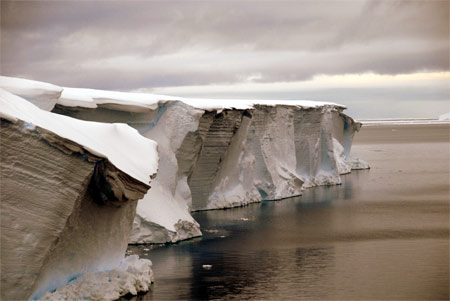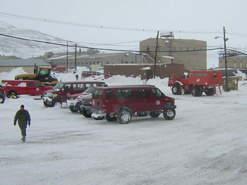
Courtesy of the National Snow and Ice Data Center
Warming on the Antarctic Peninsula
The Antarctic Peninsula, the part of Antarctica furthest from the South Pole, has been warming rapidly, five times faster than the global average. Since 1945, the Antarctic Peninsula has warmed about 4.5°F (2.5°C).
Some of the most dramatic impacts of warming are collapsing ice shelves. Since 1974, 6760 square miles (17,500 square kilometers) of ice have collapsed into the Southern Ocean. The animation at the left shows the time-lapse breakup of the Larsen B ice shelf. When an ice shelf collapses into the ocean, the glacier it was connected to on shore is less supported. Scientists are finding that Antarctic glaciers are moving more quickly towards the ocean once an ice shelf is gone.
The waters of the Southern Ocean are also warming. Warmer ocean water speeds the melting of ice shelves and it is having an impact on the sensitive marine ecosystem of the Southern Ocean too. The number of Antarctic krill, an important animal near the bottom of the Southern Ocean food chain, may be shrinking because of warming waters and melting sea ice. Less winter sea ice has also affected penguins in the region. Areas of the Antarctic Peninsula that were once lively Adelie penguin colonies are now abandoned. The remains of their simple rock nests litter the landscape. (To take a look at an abandoned colony, click here.) Many of these penguins have moved south to areas that are colder.
Unlike the rapidly warming Antarctic Peninsula, temperatures in the interior of the Antarctic continent do not appear to be rising. However, global climate models indicate that Antarctica will become warmer in the future.













